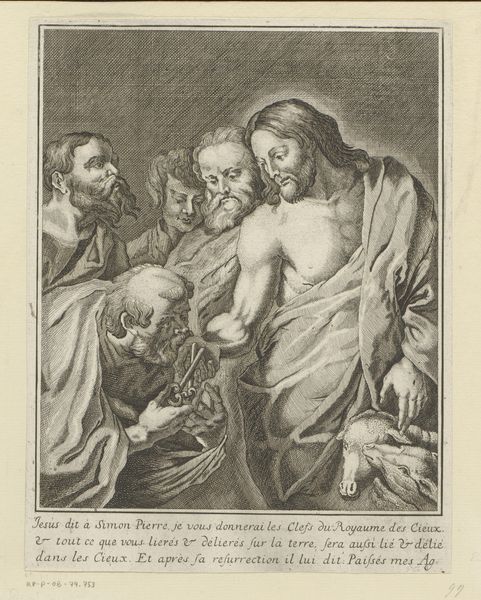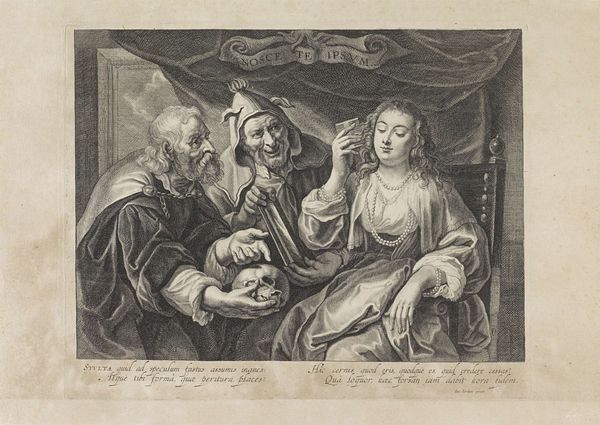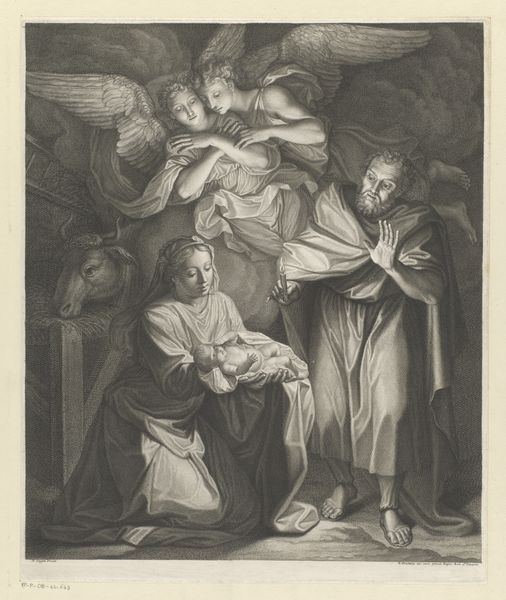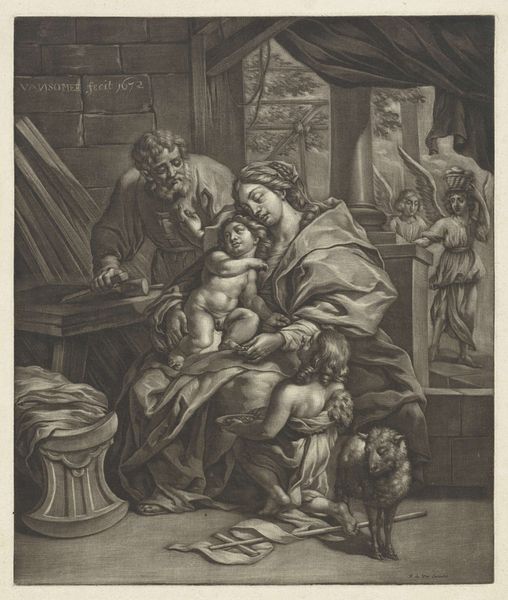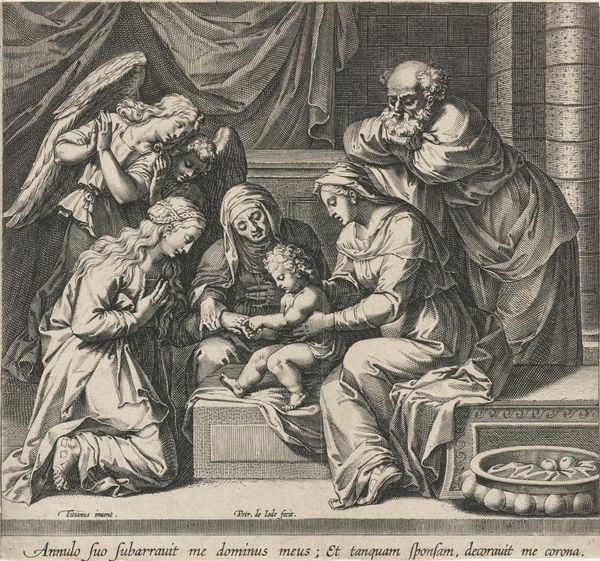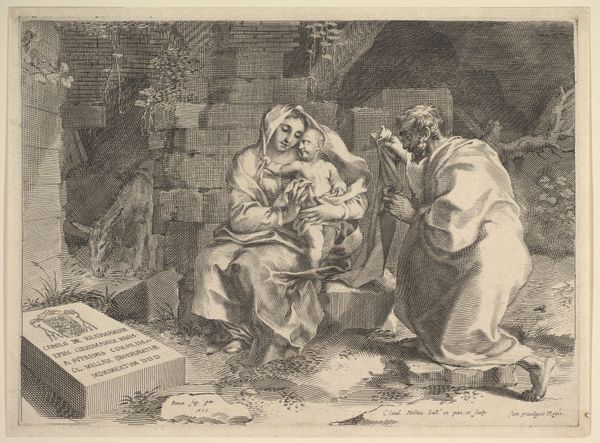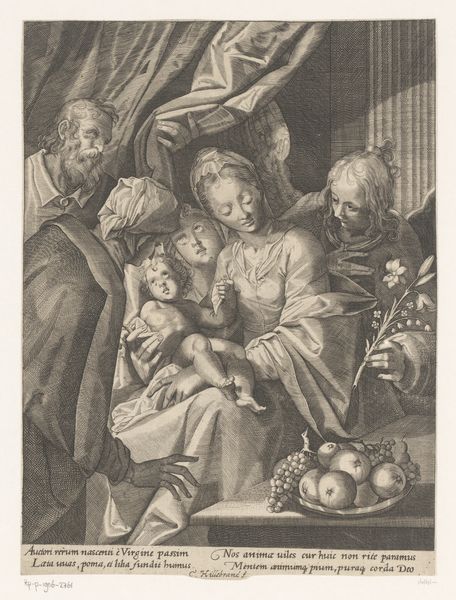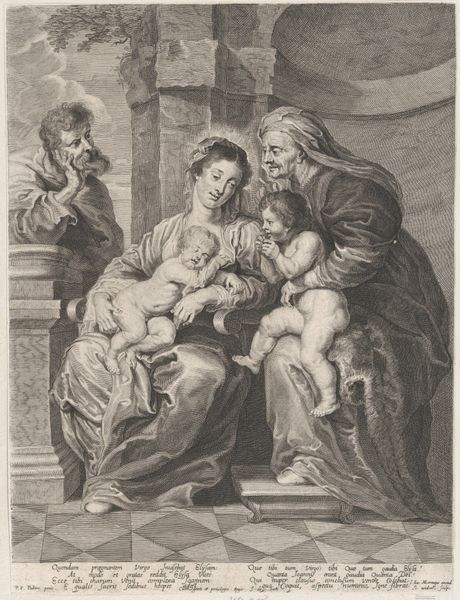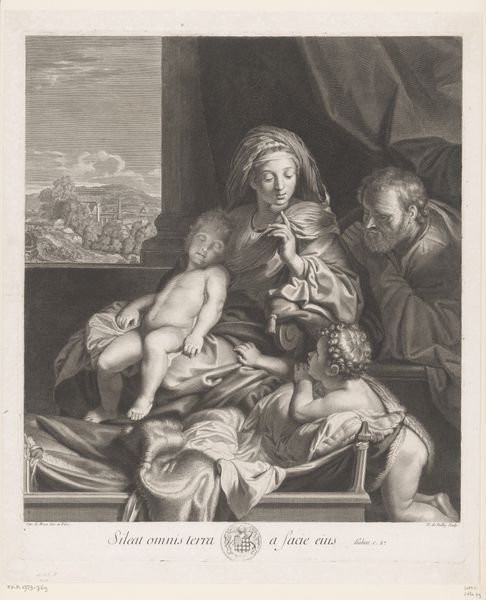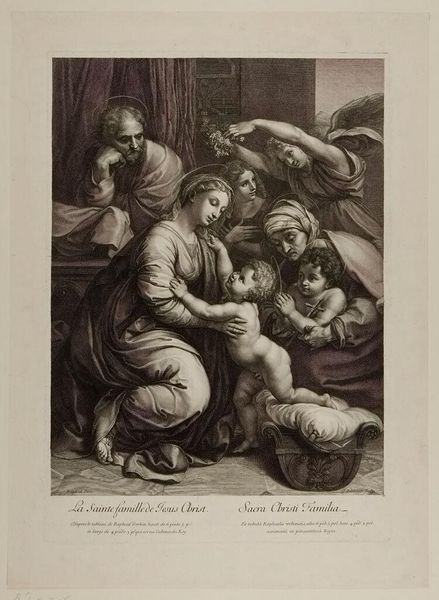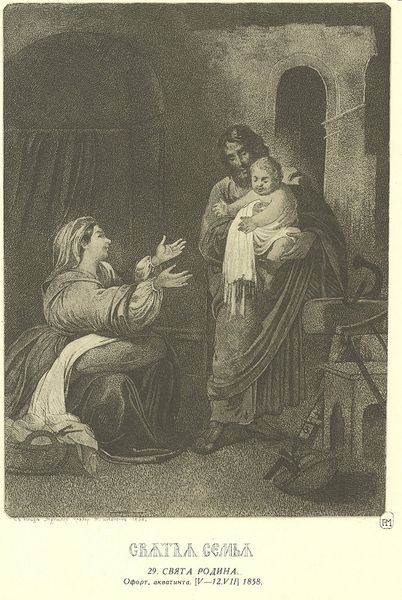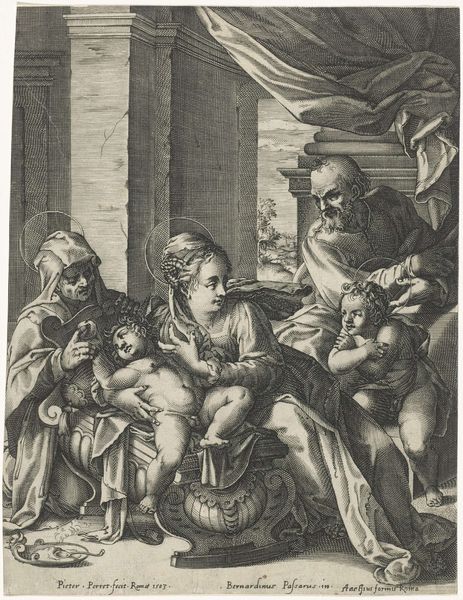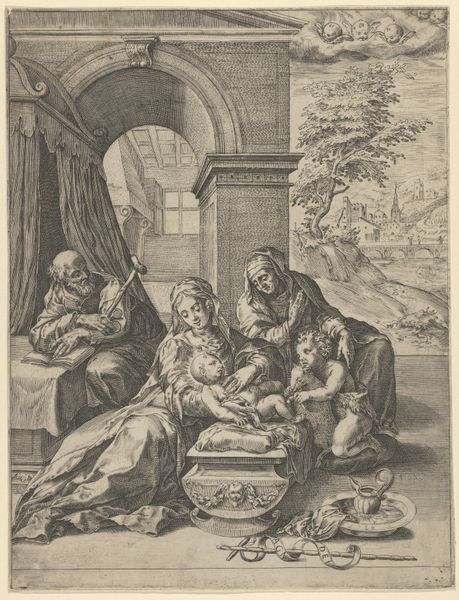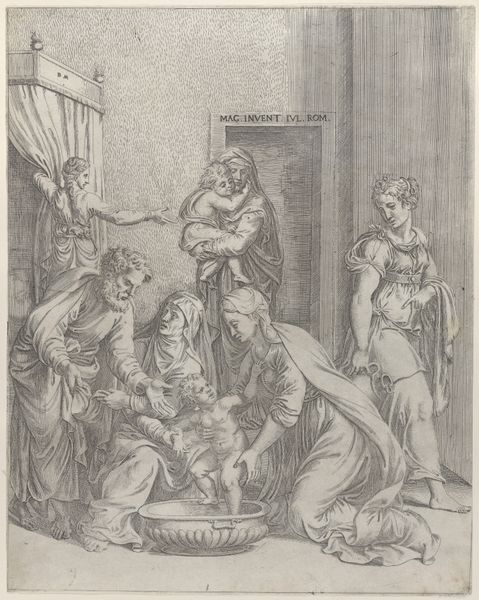
print, engraving
#
narrative-art
#
baroque
# print
#
figuration
#
portrait drawing
#
history-painting
#
engraving
Dimensions: height 260 mm, width 301 mm
Copyright: Rijks Museum: Open Domain
Curator: This engraving, executed between 1619 and 1629, depicts "The Angel Warns Joseph to Flee to Egypt" by Albert Poel. It's a fascinating example of narrative printmaking from the Baroque era. Editor: Immediately, I’m struck by the chiaroscuro effect—the strong contrast between light and dark. It heightens the drama and contributes to a mood of urgency, wouldn't you agree? Curator: Absolutely. The strategic use of light guides our eyes, beginning with the almost halo-like brightness around the infant Christ. This draws us to consider the symbolism within the image. The candlelight in Joseph's hand—how does that play into your analysis of light? Editor: Yes, the light becomes almost allegorical. I think that is about the insecurity of that era for Christian family structures, being lit but in constant risk of being distinguished... Perhaps it emphasizes the vulnerability and danger associated with their flight, with implications for societal understanding of families then? Curator: That's a valid point when considering the social and political landscape of the time. Looking closer at the composition, consider the positioning of each figure, as it reveals significant details. Notice how the angel points insistently into the shadows. Also note Mary, holding Jesus, anchoring him, contrasting with Joseph looking behind—this clearly establishes his watchman duty. Editor: Indeed! There are powerful gestures there that reinforce gender dynamics as well. Are those scriptural quotations I notice too? How do the written words impact the reception of this work for its intended audience? Curator: The verses act as both narration and moral instruction for the contemporary audience, guiding their understanding of the scene and reinforcing religious dogma. I mean, the angel is speaking directly TO those looking at the engraving... Very innovative. Editor: What strikes me most is the overall fragility conveyed. An idea about that period, and society—not so dissimilar to nowadays, now that I think about it. Curator: Precisely. Examining this engraving helps us not only understand Albert Poel's artistic choices but also the world that shaped those choices. Editor: I find that its artistic techniques, social message and intrinsic form invites us all to a contemporary reflexion.
Comments
No comments
Be the first to comment and join the conversation on the ultimate creative platform.
